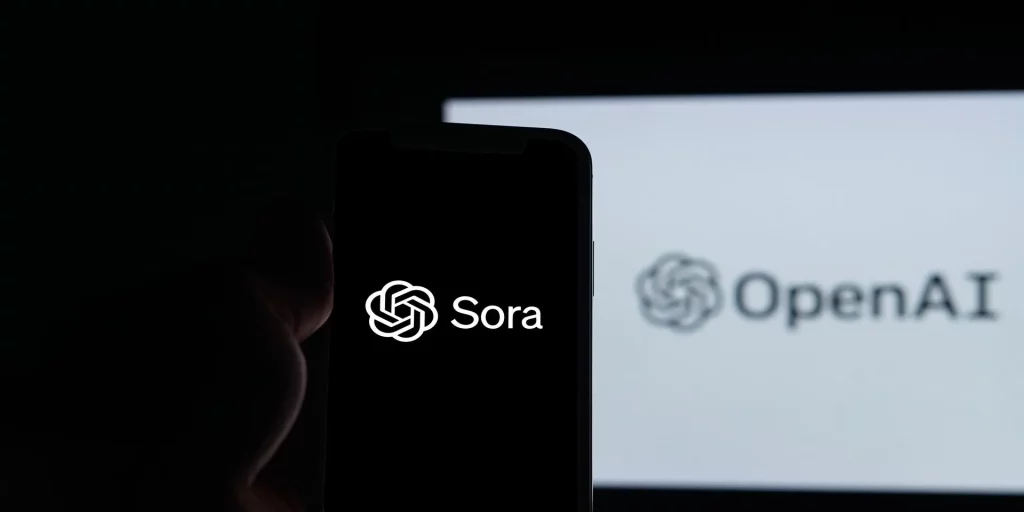In December 2024, OpenAI made an announcement that left the tech and creative industries stunned: the official launch of Sora, their revolutionary artificial intelligence (AI) model designed to generate videos from text, images, and pre-existing videos. Sora is part of a series of launches OpenAI has termed "ship-mas" and promises to change the way people create and consume visual content on digital platforms.
Sora marks a significant leap in the AI’s ability to create audiovisual content, a field that until recently seemed reserved for human experts in production and animation. With this new model, Sora, OpenAI has taken a step further toward automating the creative process, opening up possibilities in areas such as entertainment, education, advertising, and social media.
The excitement around Sora is no coincidence. Sora adds to a series of technological advancements that are transforming visual content creation. Since the release of ChatGPT, OpenAI’s language model that revolutionized interactions with artificial intelligence, the company has been working on other multimodal models like DALL-E and Whisper, which allow users to generate images from text or transcribe audio, respectively.
With Sora, the company takes this concept a step further by enabling users to create videos from simple verbal descriptions, something that was previously only possible with advanced editing software and a great deal of human labor. While Sora is still in its early stages of development, its launch has sparked expectations about how it will change the audiovisual production industry.
In this article by ITD Consulting, we will explore the main features and functionalities of Sora, as well as the advantages and limitations it presents when compared to other generative AI models.
Additionally, we will examine the impact of Sora on the content creation industry and how it will compete with giants like Meta AI, which is also developing open-source AI models for video creation. Finally, we will discuss the future of this technology, such as Sora, and how it could evolve to meet the demands of a global community of content creators.

What is Sora and How Does It Work?
Sora is an AI model developed by OpenAI that allows users to generate videos from textual descriptions. Through Sora, users can create visual content using only words, images, or even pre-existing videos as a reference.
This includes any type of content, from surreal videos to realistic visual representations based on a specific script or concept. With an easy-to-use interface, Sora makes video creation accessible to a wider audience, not just filmmakers or graphic designers, but anyone interested in generating visual content quickly and effectively.
The basic operation of Sora is similar to other generative AI models from OpenAI, such as ChatGPT or DALL-E. Sora users start by providing a text input, describing what they want to see in the video. Sora processes this input and generates a video that matches the described expectations.
However, what makes Sora unique is its ability to allow the upload of previous images or videos, which serve as a basis for generating new clips. This flexibility opens up a wide range of creative possibilities since users can combine existing media with newly generated visual elements, resulting in surprising and diverse outputs.
To access Sora, users must have a subscription to ChatGPT Plus, Teams, Pro, or Enterprise. The Sora platform is available through Sora.com, and users with these subscription plans can start creating videos immediately after logging into their account. In this regard, Sora follows the business model of other OpenAI tools, where access to premium features is tied to a subscription system.
Main Features and Tools of Sora
1. Video Generation from Text, Images, and Videos
One of Sora’s standout features is its ability to generate videos from textual descriptions. This feature allows users to write a narrative or a detailed description of what they want to see in the video, and Sora processes that information to create a video that meets the request.
However, Sora is not limited to just text input; users can also upload images and videos, which will be used as the foundation to create new content. For example, a content creator could upload an image of a futuristic city and ask Sora to generate a video showing various scenes of that city in action.
Additionally, Sora also provides the ability to use previous videos as references, which allows users to create remixes or variations of existing content. This ability to work with both text and visual media greatly expands the creative possibilities for users.
2. Tools in the "The Composer" Menu
Within the platform, Sora offers a set of advanced tools that facilitate customization and give users complete control over the video creation process. These tools are located in the menu called "The Composer" and allow users to adjust parameters such as format, resolution, and video duration.
Some of the most useful tools within Sora’s "The Composer" include:
- Upload Images or Videos: Users can upload files directly from their devices, allowing them to generate content based on pre-existing media. This tool also supports the integration of photos or clips from online galleries, offering greater flexibility.
- Presets: Sora’s presets are default settings that offer different visual styles for videos. Some available presets include "Balloon World" (for a colorful and surreal look), "Stop Motion" (emulating the frame-by-frame animation technique), "Film Noir" (giving videos a dark and dramatic appearance), and others that provide unique visual effects.
- Aspect Ratio: Sora users can select the aspect ratio for their videos, tailoring them to different platforms. Options include 16:9 (horizontal), 1:1 (square), and 9:16 (vertical), making it easy to create videos suited for different screen sizes and social media platforms.
- Resolution and Duration: Users can choose the video quality (480p, 720p, or 1080p) and adjust the video’s length, which can range from 5, 10, 15, or up to 20 seconds. ChatGPT Plus users can generate videos in 720p resolution up to 10 seconds long.

3. Storyboard: Sequential Video Creation
One of Sora’s more advanced features is its storyboard option, which allows creators to develop a sequence of scenes rather than a single static video. This tool is particularly useful for those looking to build complex narratives or videos with interconnected scenes.
Sora’s storyboard helps users maintain consistency between scenes, which makes it easier to create longer videos or videos with a defined narrative structure.
4. Advanced Video Editing
After generating videos, Sora allows users to make a series of edits to adjust the content to their needs. Some editing options in Sora include:
- Edit Story: Users can change the focus of the video, modify the script, or adapt the narrative.
- Trim Video: In Sora, users can adjust the duration and select only the parts of the video they want to keep.
- Remix: Users can modify content from other videos generated by the Sora community, creating new versions or adaptations of existing material.
- Blend: This tool lets users merge clips from different videos to create a cohesive and unique visual experience.
5. Cost and Credits
Sora operates on a credit-based system, which determines how many videos can be generated per month based on the user’s subscription plan. ChatGPT Plus users receive 50 credits per month, which allows them to generate up to 50 videos at 720p quality.
However, those who subscribe to the ChatGPT Pro plan have access to unlimited video generation, as well as the ability to create videos in high resolution (1080p) and up to 20 seconds in duration.
Challenges and Limitations of Sora
While Sora is a powerful tool, it still presents several limitations that affect its effectiveness and usefulness. Let’s explore some of these challenges:
1. Unrealistic Representation of Physics and Movement
One of Sora’s biggest challenges is its difficulty in simulating realistic physics in generated scenes. For example, when generating videos with animals or people, the characters’ movements often appear unnatural, and objects do not react appropriately to interactions. This can result in humorous or unsettling situations, where elements in the video behave in ways that are not expected in the real world.
2. Inconsistent Video Generation
Another issue reported by Sora users is the inconsistency in the quality of generated videos. While some videos are impressive, others feature noticeable defects, such as abrupt changes in visual elements or distortions in the scene. Given Sora's experimental nature, users must be prepared to make several attempts before achieving a satisfactory video.
3. Accessibility and Geographical Restrictions
Despite its availability in countries like the United States, Sora is still not accessible in much of Europe and the UK. Users in these regions must use VPN services to access the platform, which presents an obstacle for those wishing to use it in unsupported countries.
The Future of Sora and Competition with Meta AI
The launch of Sora marks the beginning of a new era in AI-generated video creation. However, it is not the only competitor in the market. Meta AI is working on its own open-source AI model, called Llama, which also seeks to revolutionize visual content creation on platforms like WhatsApp, Facebook, and Instagram.
While Llama is an open-source tool, giving it an advantage in terms of accessibility, Sora stands out for its more polished interface and its ability to integrate with other OpenAI tools like ChatGPT.
Both tools represent significant advances in the content creation industry, and it’s likely that in the coming years, they will continue evolving to improve the quality of generated results and expand their global market reach.

In summary, Sora by OpenAI represents a giant leap toward the democratization of video creation, allowing any user to generate visual content from text and existing media. While it still presents limitations in terms of quality and realism, the tool has enormous potential to transform the content production industry.
In the future, as the technology behind Sora improves, we can expect to see advancements in the quality of generated videos, as well as increased integration with other platforms and services. There’s no doubt that the competition with other platforms like Meta AI will keep Sora in a constant evolution process, which could lead to a true revolution in digital content creation.
As more Sora users gain access to these tools, we may be entering a new era of audiovisual production, where creativity combines with artificial intelligence to generate videos quickly, economically, and efficiently. While Sora is not perfect in its current form, its ability to generate content in seconds and its creative flexibility make it a promising tool.
Just like previous generative AI models from OpenAI, such as DALL-E, Sora is likely to continue improving over time, overcoming current obstacles, and offering increasingly realistic and useful results for content creators worldwide. If you want to learn more about everything Sora can offer your business, contact us at [email protected]. We have a dedicated technology team to help you stay at the forefront of innovation.





